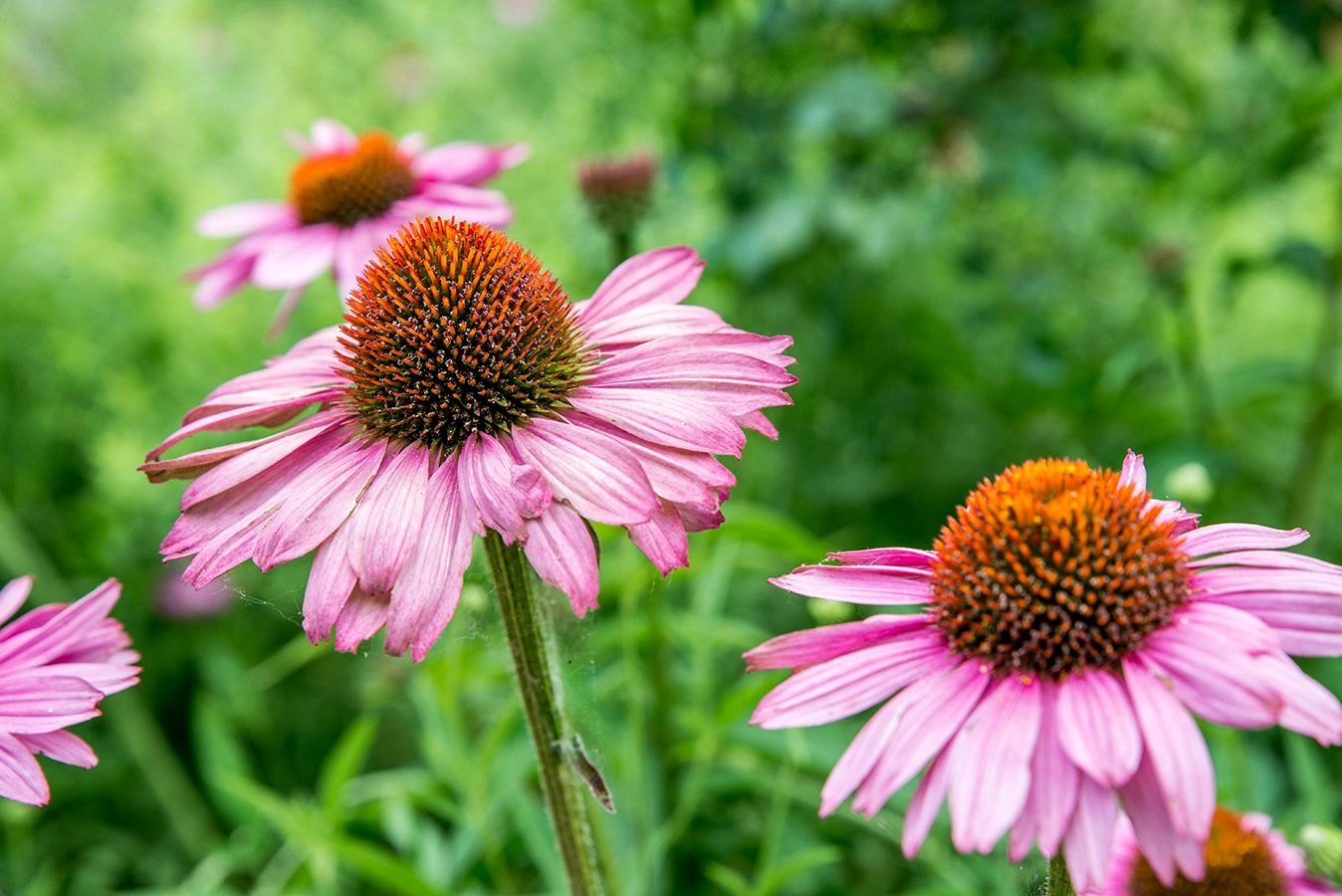Family: Compositae (Asteraceae)
Other Common Names: Narrow-Leaf Purple Coneflower, Black Sampson, Missouri Snake Root, Kansas Snake Root, Coneflower, Elk Root
Parts Used:
-
Rhizome (root)
Description:
Echinacea angustifolia is a herbaceous plant belonging to the Asteraceae (daisy) family. It grows between 40 to 70 cm tall and produces spindle-shaped, often branched taproots. The stems and leaves are moderately to densely covered with hairs.
The plant blooms from late spring to mid-summer, bearing pinkish-purple daisy-like flowers. It naturally grows in dry prairies, rocky barrens, and sandy clay soils—particularly in the central regions of North America, including Kansas, Oklahoma, Texas, and Louisiana.
Native Americans originally observed elk seeking out and eating these plants when sick or wounded, giving it the name "Elk Root". They quickly adopted it for medicinal purposes, chewing the root to relieve ailments and applying it topically to wounds.
Therapeutic Uses:
Echinacea angustifolia is highly valued for its immune-boosting, anti-inflammatory, and healing properties. Some of its traditional and modern uses include:
-
Strengthening the immune system against colds, flu, and infections
-
Supporting wound healing
-
Combating blood poisoning and septic conditions
-
Alleviating symptoms in gonorrhea
-
Treating boils, ulcers, pustules, and gangrene
-
Easing goitre with exophthalmic symptoms
-
Providing relief in the last stages of cancer
-
Managing venomous bites, stings, and skin infections
-
Addressing meningitis and puerperal (post-childbirth) infections
-
Reducing tiredness and debility
-
Supporting treatment of appendicitis and lymphatic inflammation
-
Relieving piles (hemorrhoids)
-
Managing herpes, burns, eczema, and skin ulcers
-
Combating upper respiratory tract infections, flatulence, and vaginal infections
Modern Significance:
In recent times, Echinacea has gained popularity for its potential benefits in managing cancer-related symptoms and HIV infections. It's often taken as a supplement to enhance overall immunity and maintain good health.
Dr. William Boericke, a noted homeopath, described Echinacea as a "corrector of blood dyscrasia" — referring to imbalances or impurities in the blood.
Usage:
-
Traditionally used by chewing the raw root
-
Can be prepared as a tincture, decoction, or infusion
-
Topical applications for skin conditions
-
Though injectable and topical formulations exist, they are less commercially available today
Note:
While Echinacea angustifolia is celebrated for its wide therapeutic applications, responses can vary between individuals. It is not a universal remedy but remains a highly respected and widely used herbal supplement.
Speech Disorder
A speech disorder, also known as a speech impairment...
ADHD
Attention-deficit / hyperactivity disorder (ADHD) is a...
Cerebral Palsy(CP)
Cerebral palsy (CP) is a group of neurological disorders...
Cancer
Cancer is a broad term for diseases where cells...




